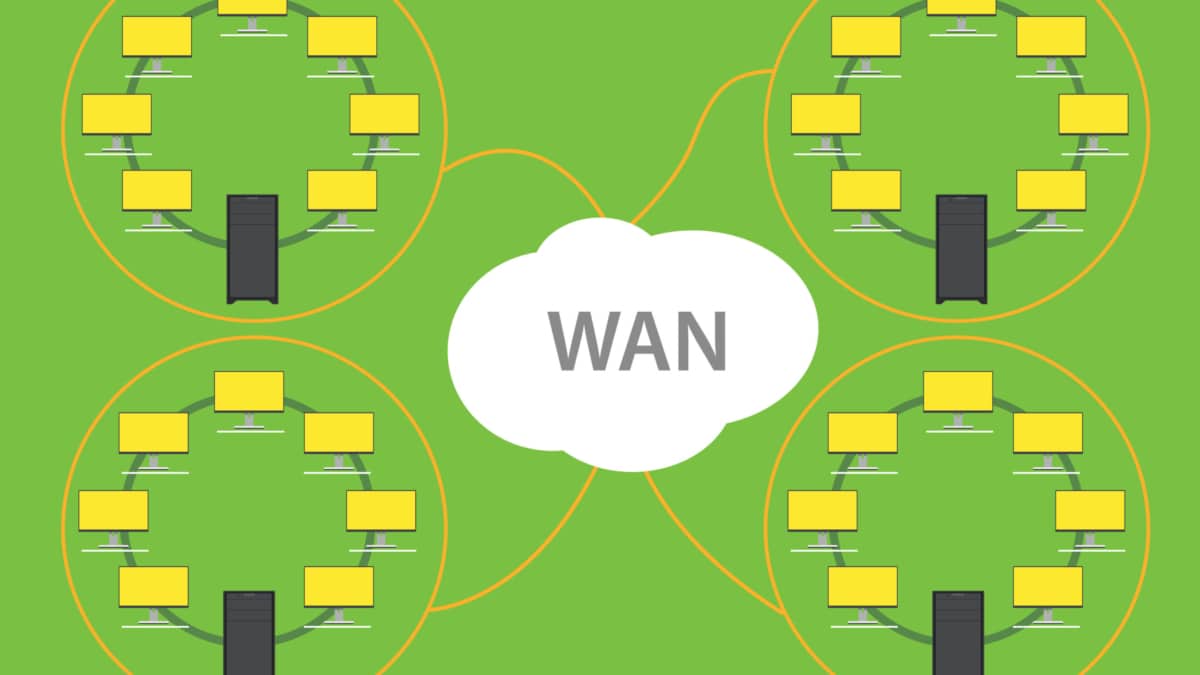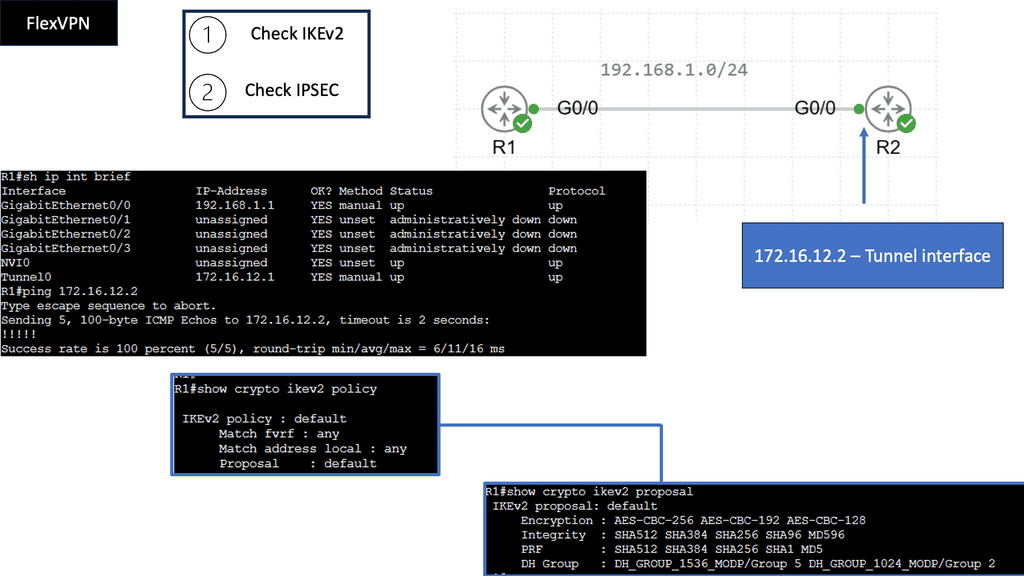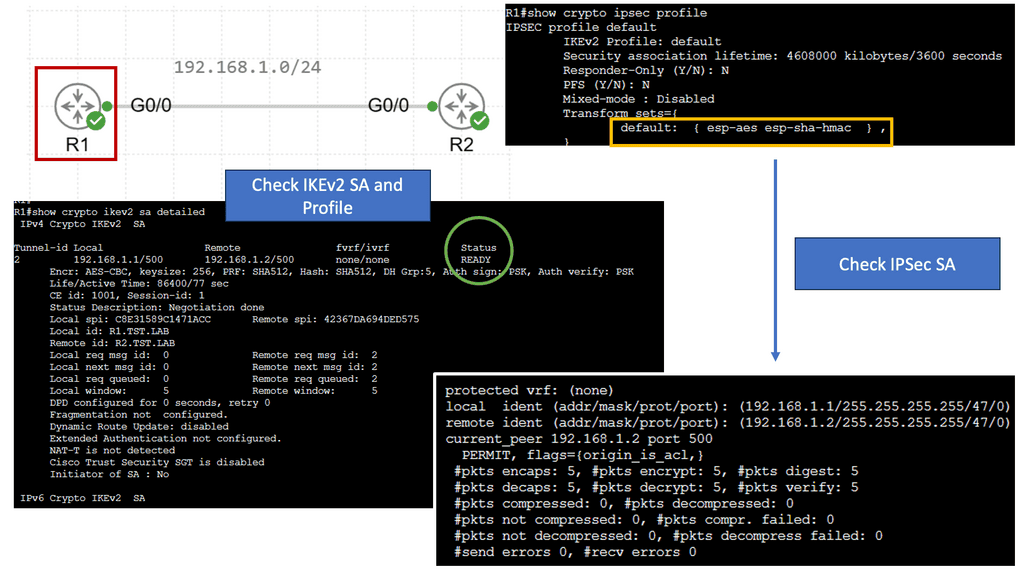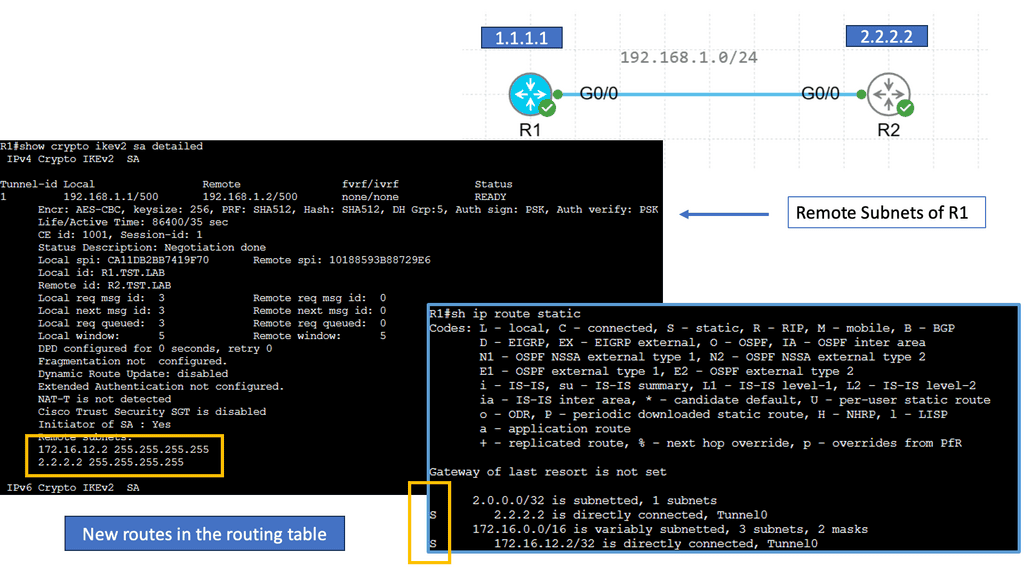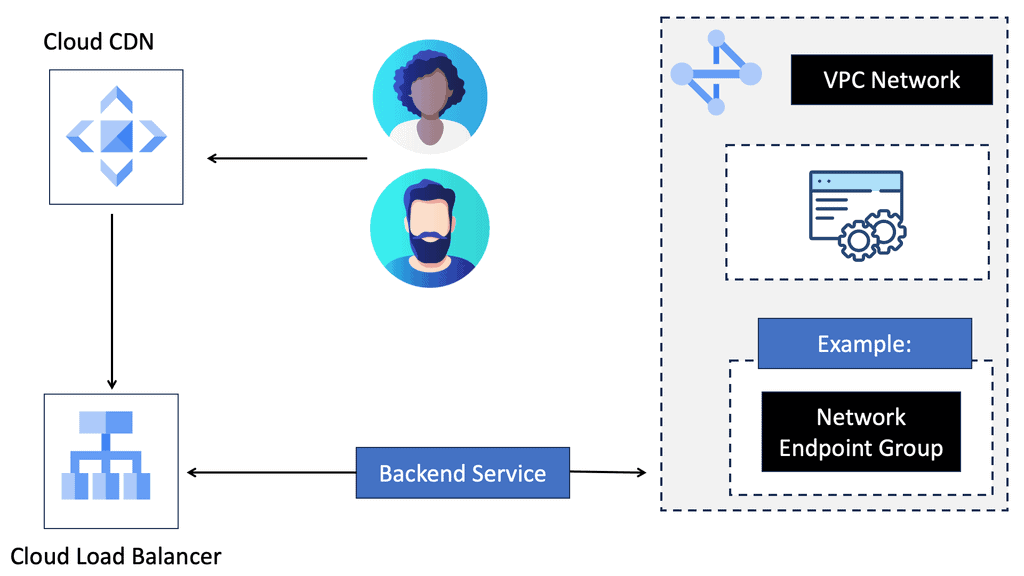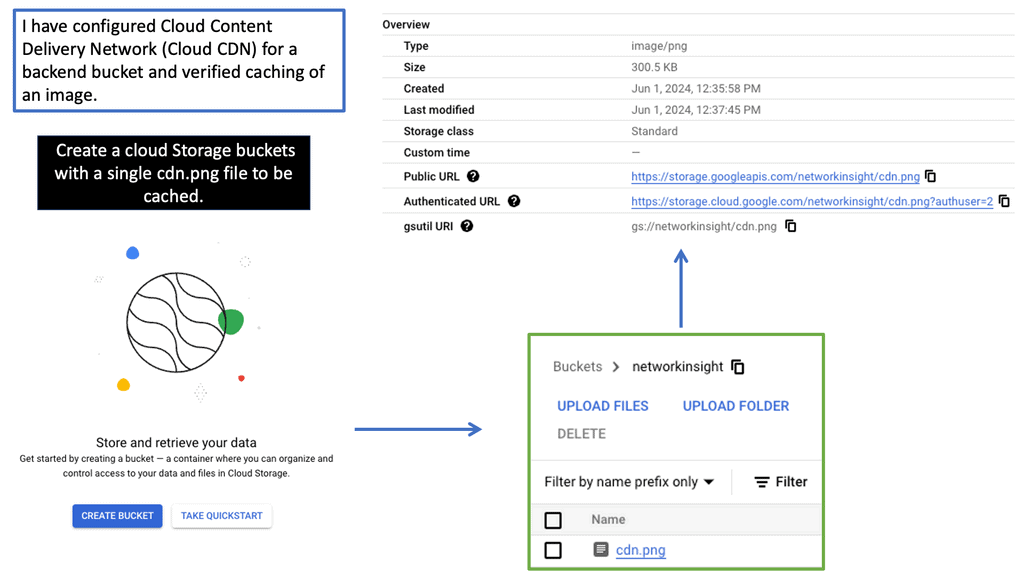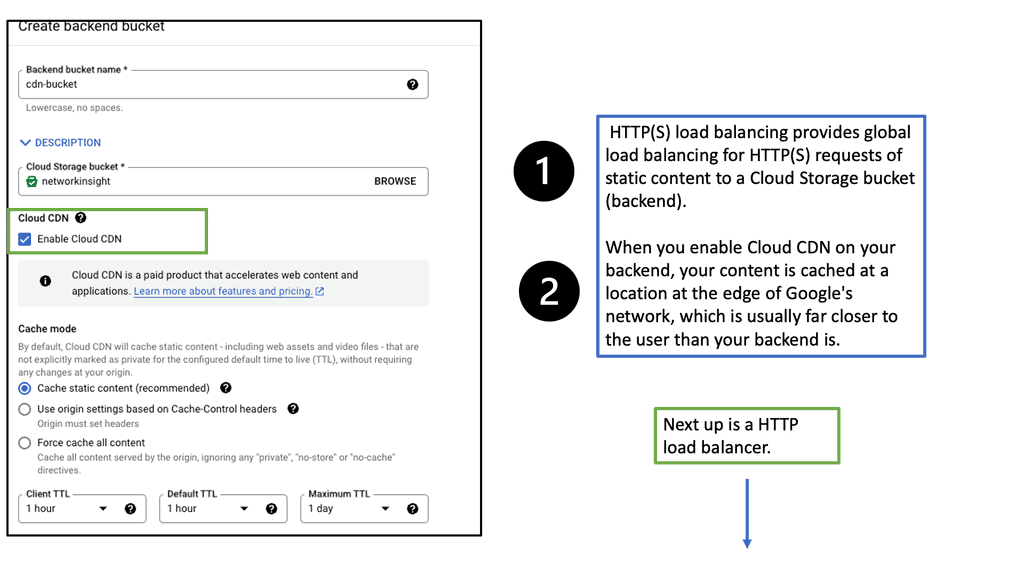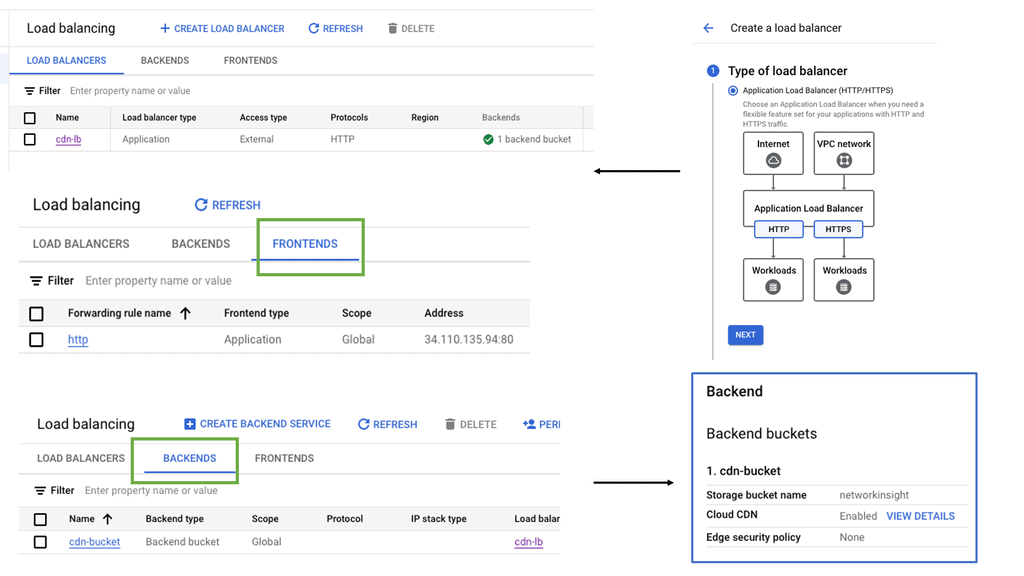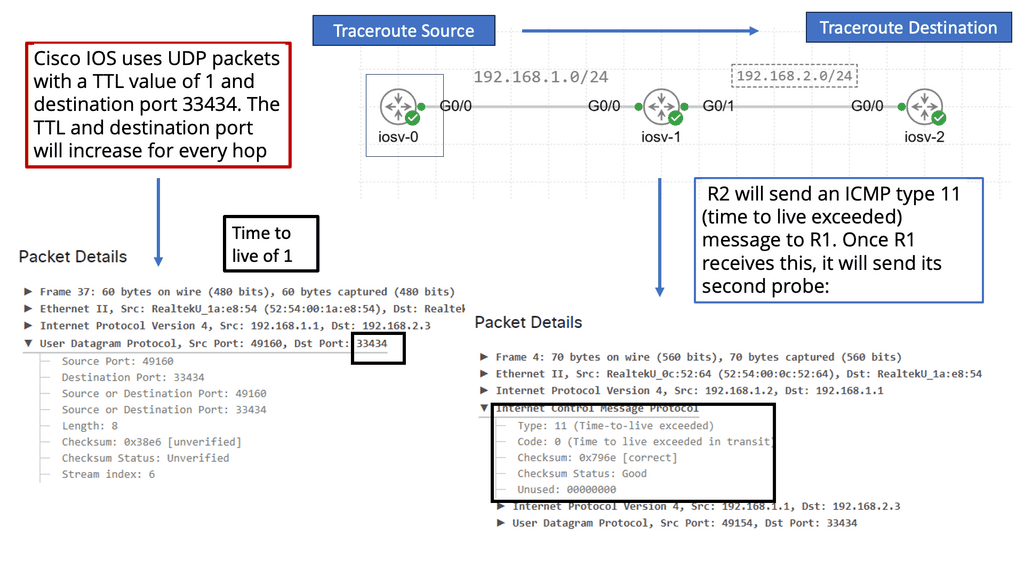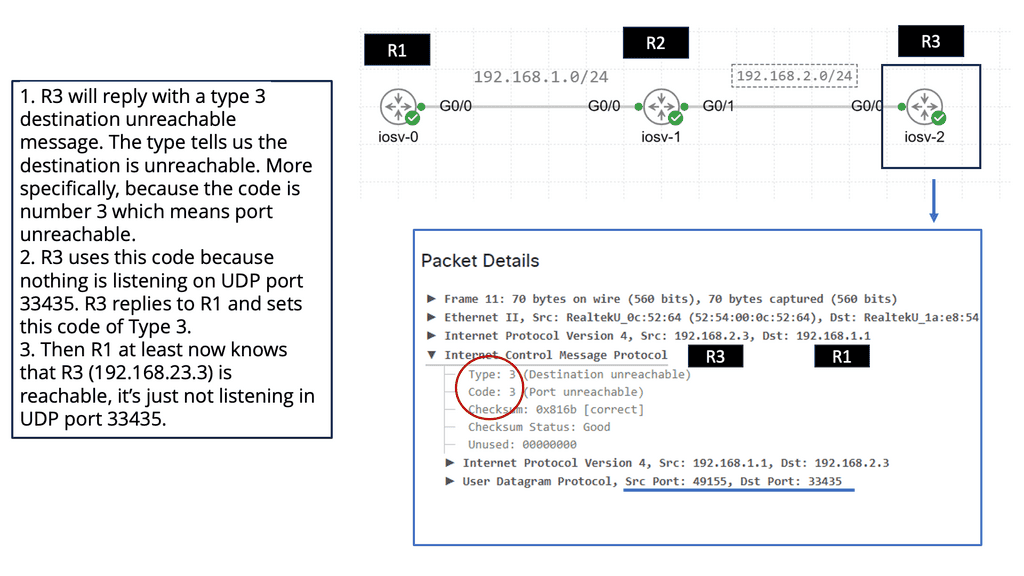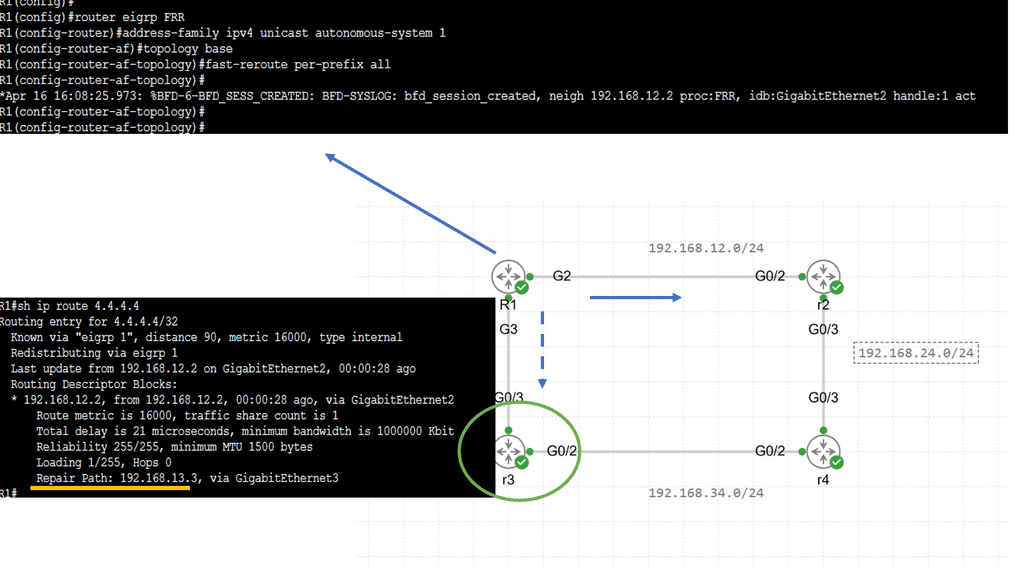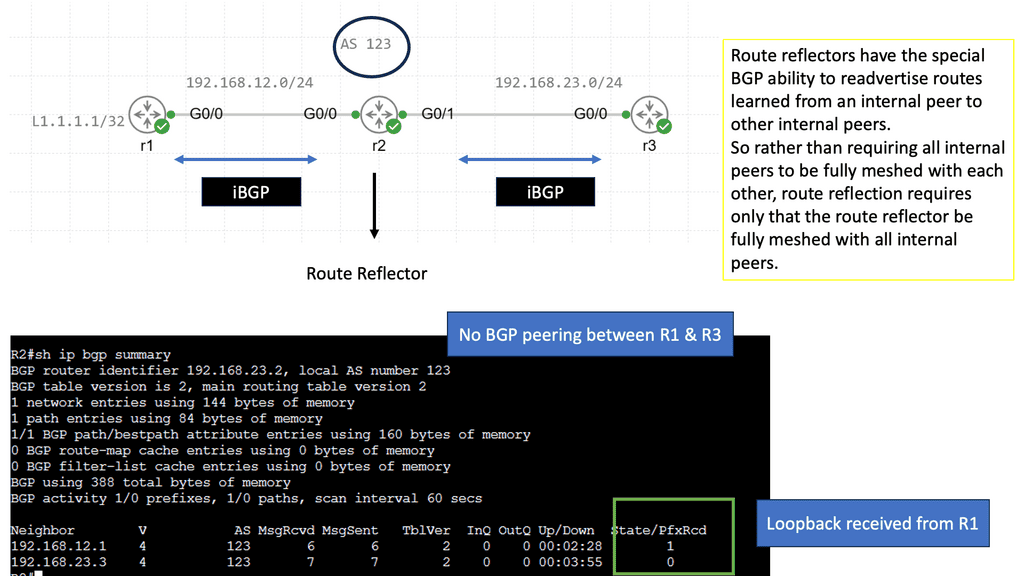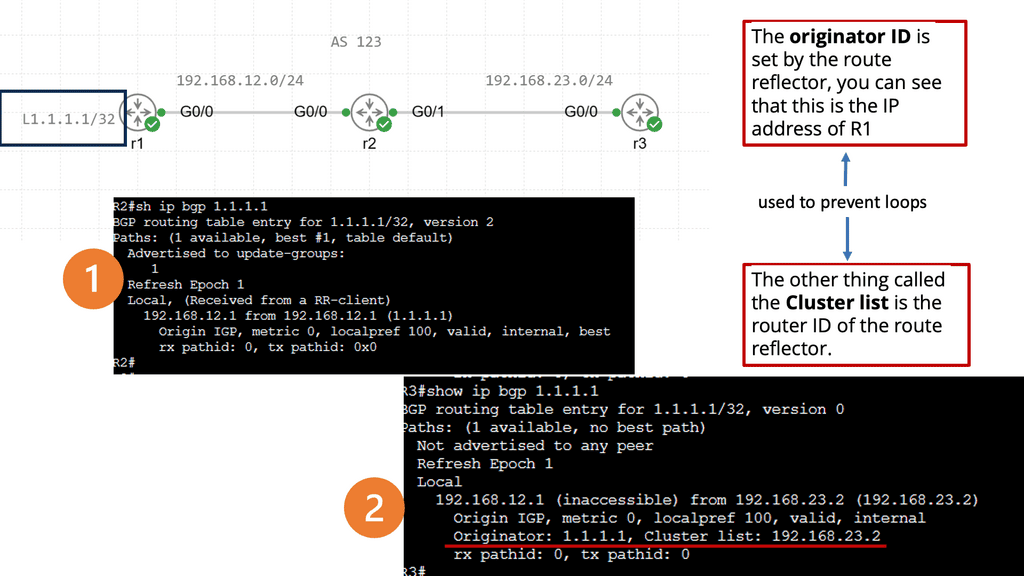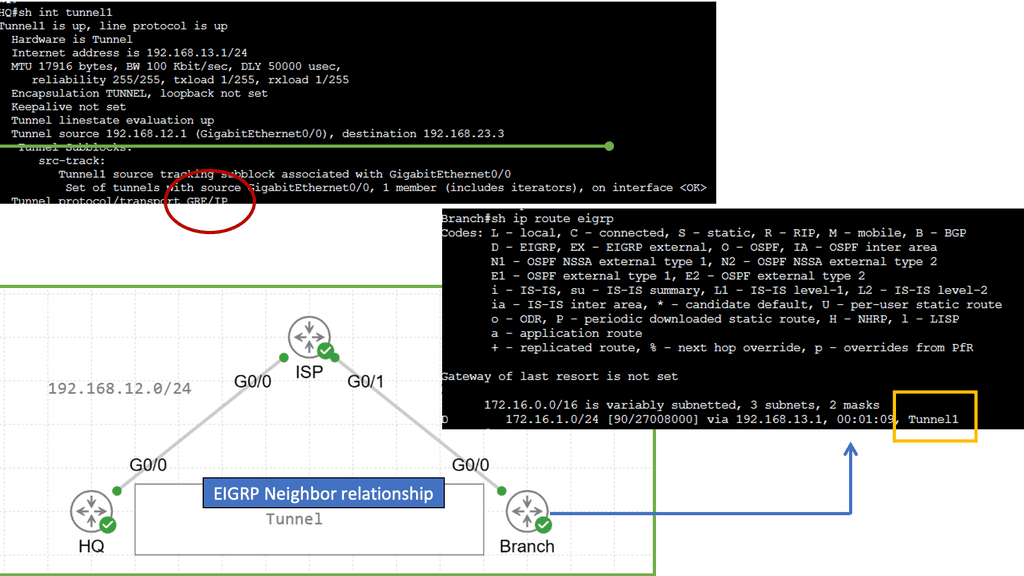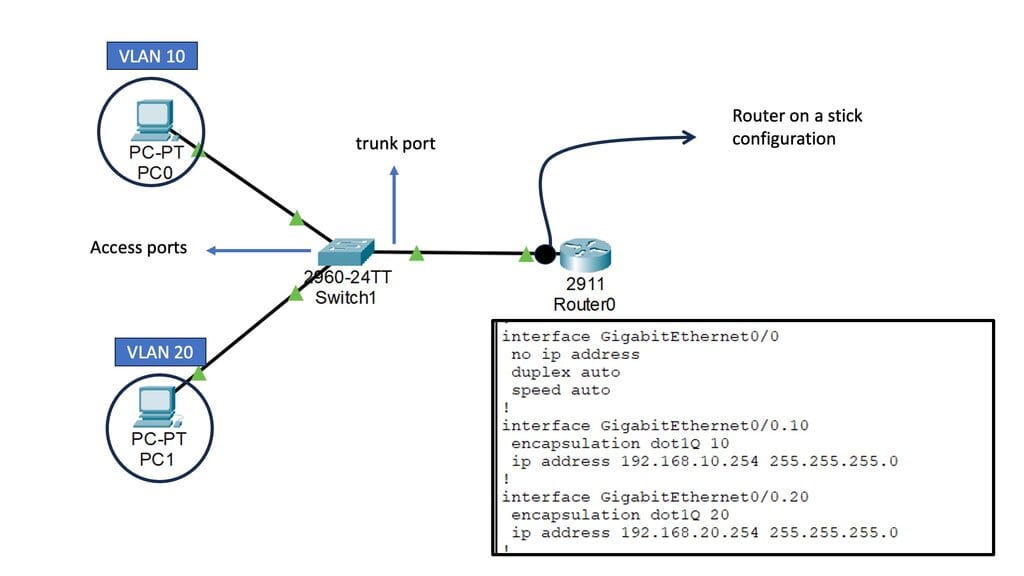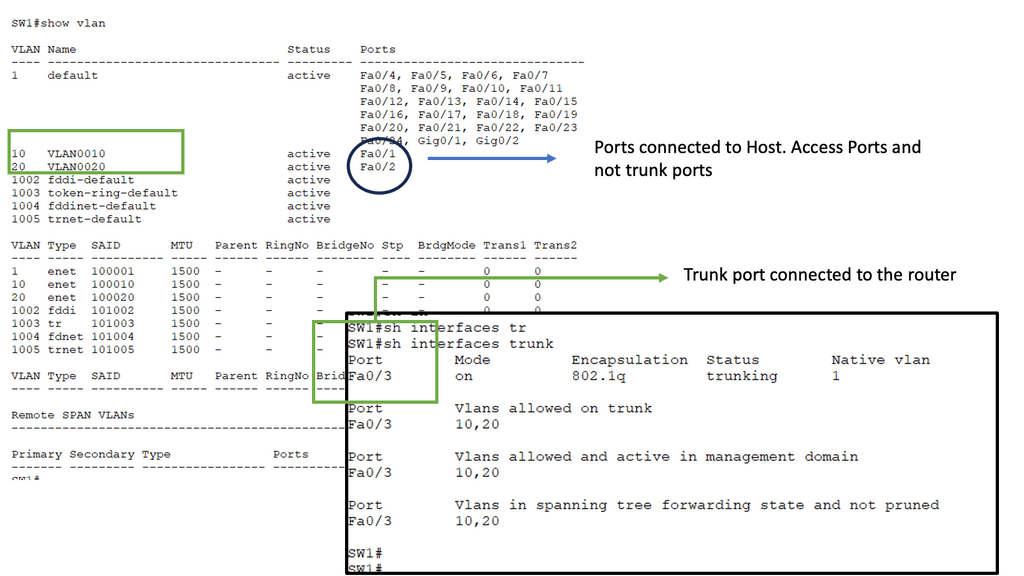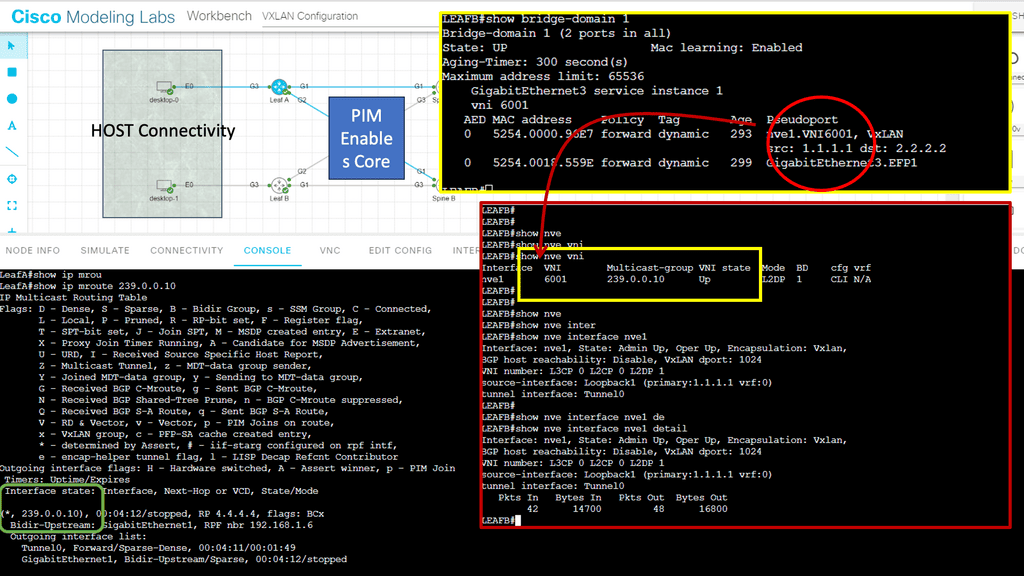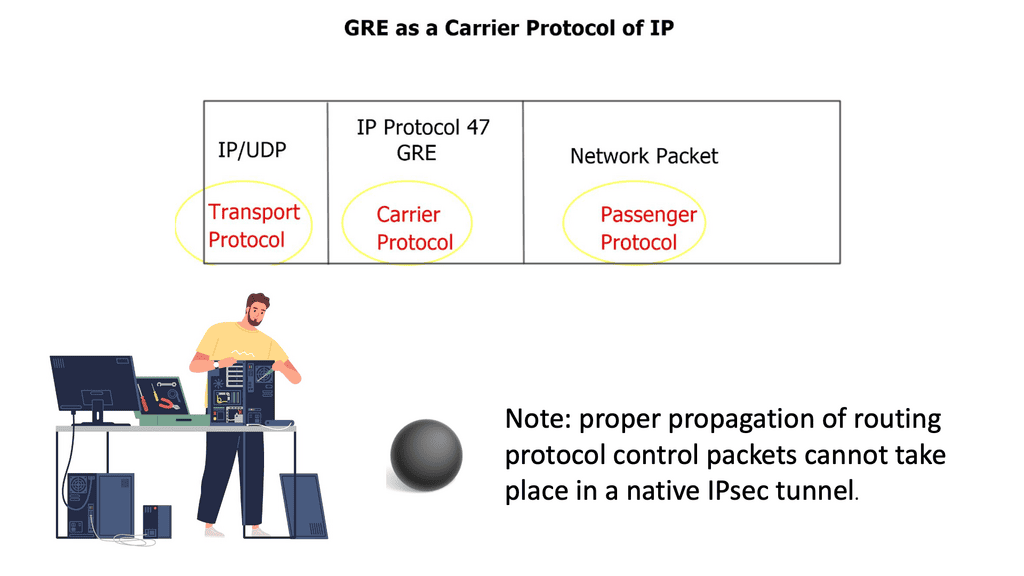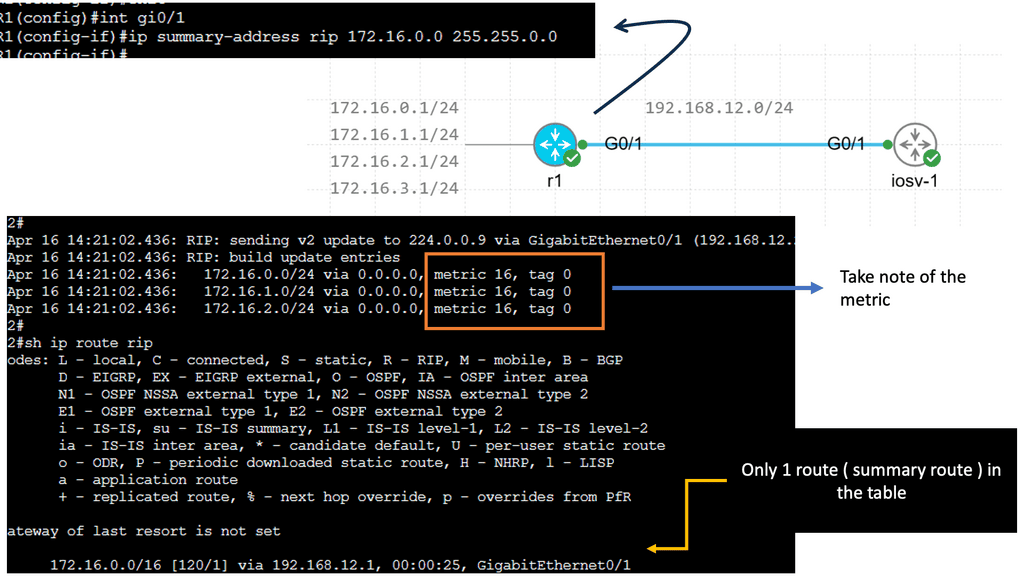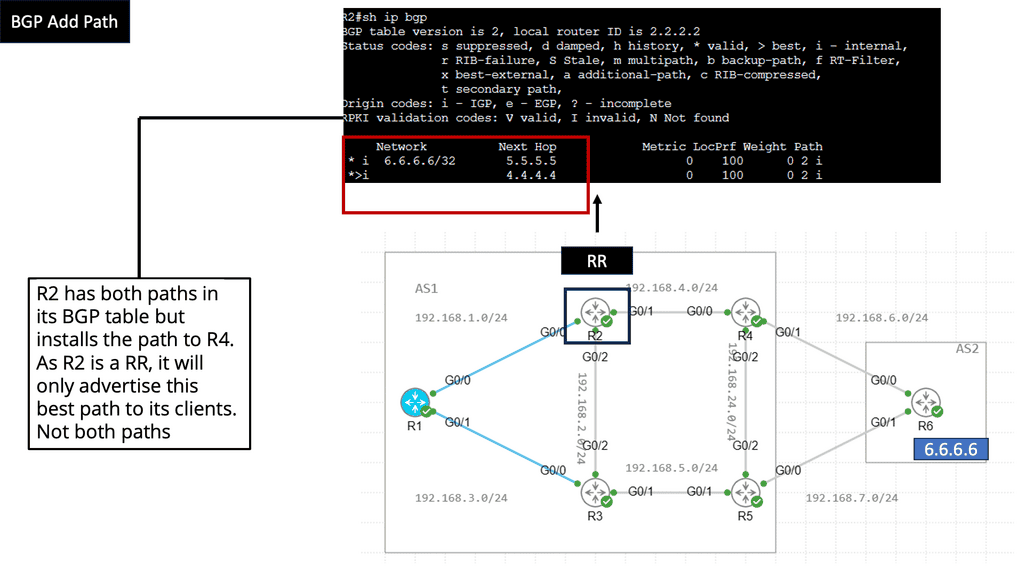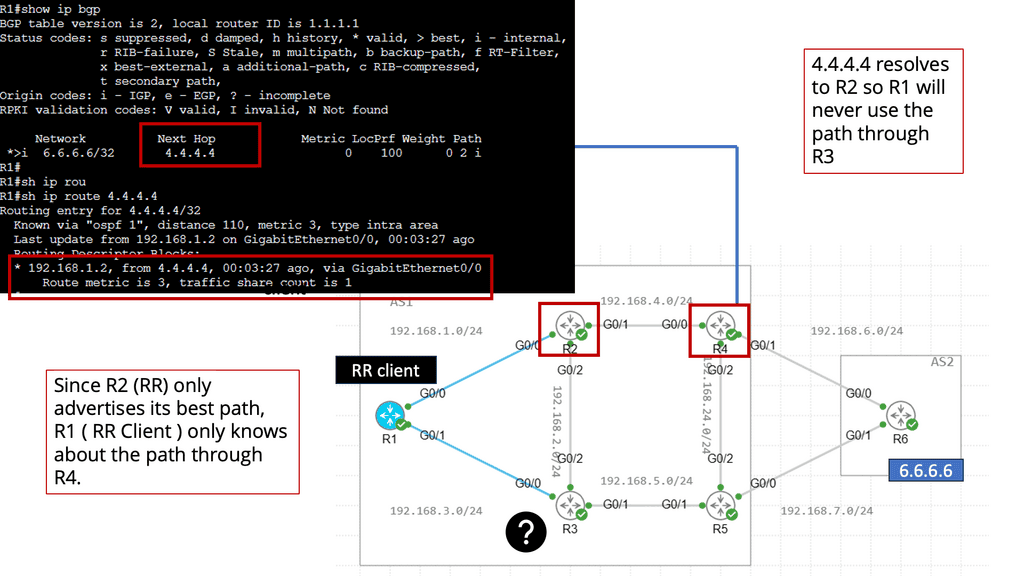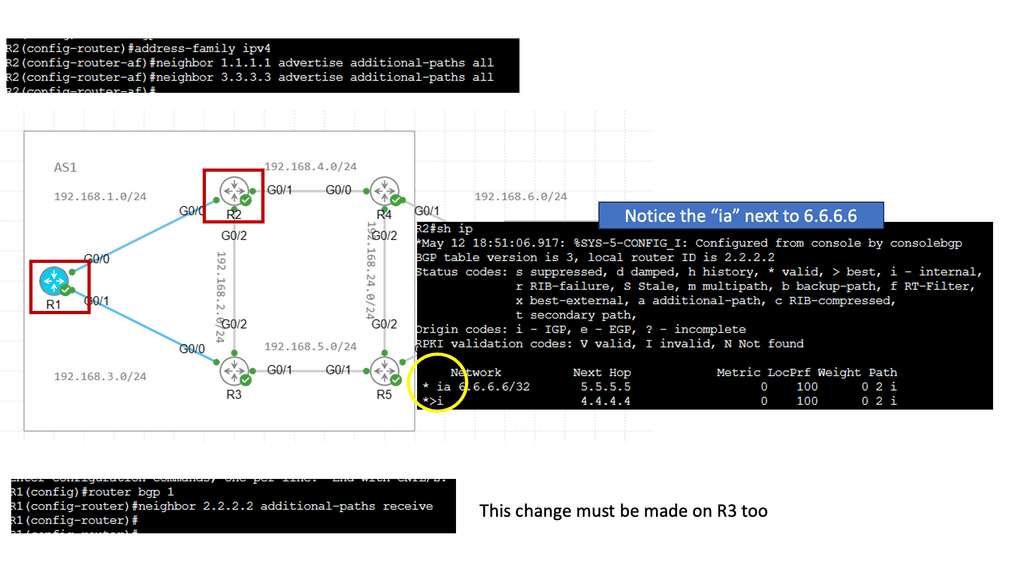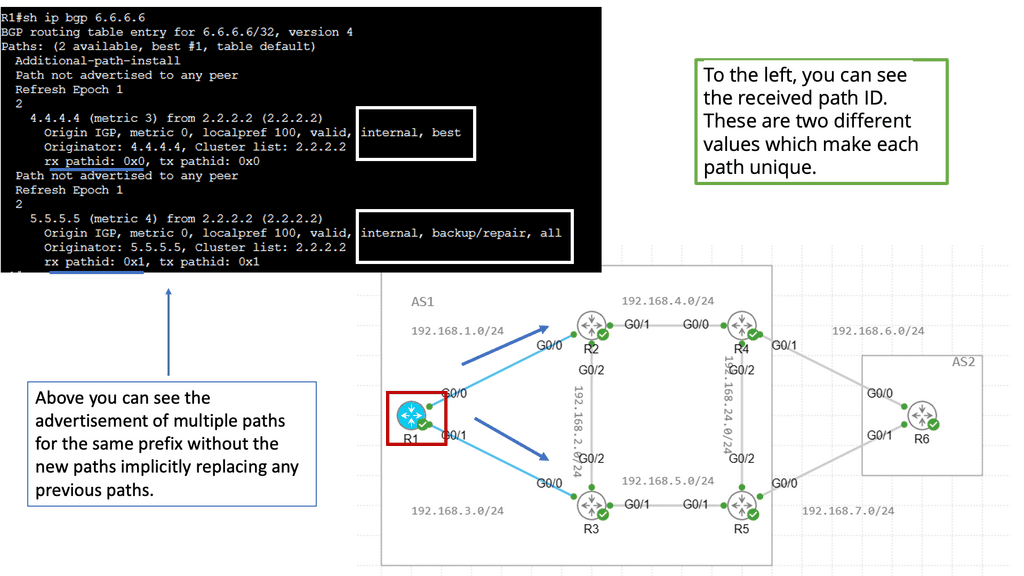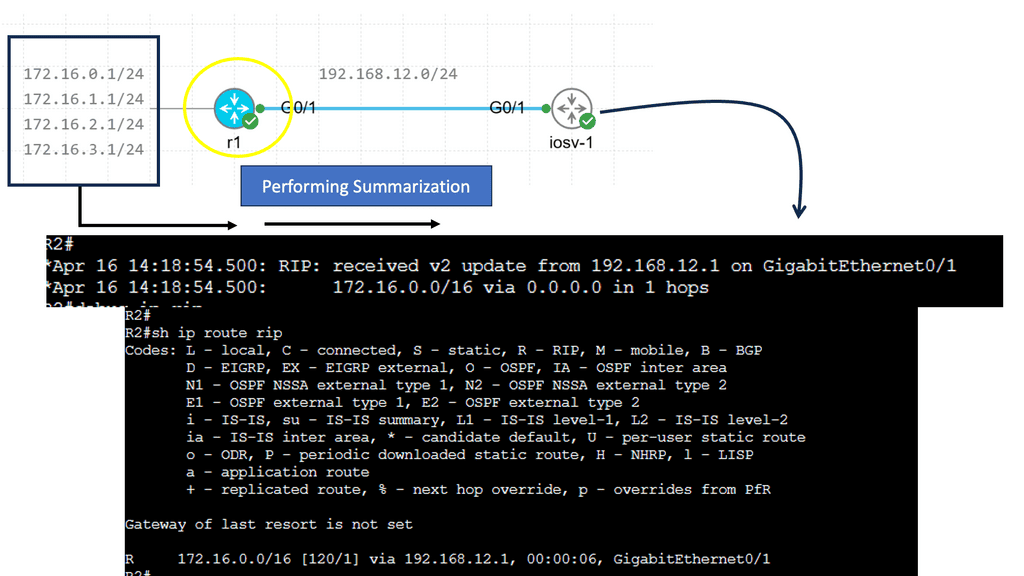Network Stretch
Network stretch refers to the capability of a network to extend its reach, connecting users and devices across geographical boundaries. This can be achieved through various technologies such as virtual private networks (VPNs), wide-area networks (WANs), or cloud-based networking solutions.
Network stretch goes beyond the traditional limitations of physical infrastructure and geographical boundaries. It refers to the ability of a network to expand, adapt, and connect diverse devices and systems across various locations. This flexibility allows for enhanced communication, collaboration, and access to resources.Matt Conran
Highlights: Network Stretch
– Network stretch techniques involve extending the boundaries of a network, enabling seamless communication across multiple locations, and enhancing connectivity beyond traditional limitations. Whether it’s through physical or virtual means, these techniques empower businesses to establish secure and reliable connections, regardless of geographic distances.
– Organizations must adopt robust strategies tailored to their specific requirements to implement network stretch techniques successfully. Some key strategies include leveraging virtual private networks (VPNs), utilizing software-defined networking (SDN) solutions, and implementing hybrid cloud architectures. Each approach offers unique advantages, such as enhanced security, scalability, and flexibility.
– Network routing forms the backbone of data transmission, guiding packets of information from source to destination. It involves selecting the most suitable path for data to travel through a network of interconnected devices. By efficiently navigating the network, data reaches its destination promptly, ensuring a smooth user experience.
**The Role of VPN in Network Stretching**
One of the most commonly used network stretch techniques is the Virtual Private Network (VPN). VPNs create secure, encrypted connections over the internet, allowing users to access resources remotely as if they were directly connected to the local network.
This is particularly beneficial for businesses with remote employees or branch offices. By using a VPN, organizations can extend their network, providing employees with the same access and security as if they were in the main office. Moreover, VPNs help in safeguarding sensitive data from potential cyber threats, making them a crucial component of modern network strategies.
Example VPN Technology with FlexVPN
### What is FlexVPN?
FlexVPN is a next-generation VPN framework introduced by Cisco, designed to provide a more unified and streamlined approach to configuring VPNs. Unlike traditional VPN solutions, which often require separate configurations for different types of connections, FlexVPN consolidates these into a single, cohesive framework. This makes it easier to manage and deploy VPNs regardless of the underlying network topology or protocol in use.
### Key Features of FlexVPN
One of the standout features of FlexVPN is its ability to support a wide array of protocols, including IPsec, SSL, and MPLS. This versatility ensures that organizations can tailor their VPN configurations to meet specific needs without being constrained by the limitations of a single protocol. Additionally, FlexVPN provides enhanced security features, such as dynamic key exchange and robust authentication mechanisms, to ensure that data remains protected across the network.
**Leveraging CDN for Enhanced Performance**
Content Delivery Networks (CDNs) play a vital role in expanding network reach by distributing content across multiple servers worldwide. This technique ensures that users access data from the nearest server, significantly reducing latency and improving load times.
CDNs are particularly advantageous for businesses with a global audience, as they help maintain website performance and user experience regardless of the user’s location. By leveraging CDNs, businesses can enhance the delivery of high-traffic content like videos, images, and applications, ensuring consistent performance across the globe.
Example – Google Cloud CDN
Google Cloud CDN is a global network of servers designed to deliver content with low latency and high availability. It caches static assets, such as images, videos, and documents, in strategically edge locations worldwide. When a user requests content from your website, Google Cloud CDN serves it from the nearest edge location, drastically reducing latency and improving overall performance.
a. Accelerated Content Delivery: By caching content at edge locations, Google Cloud CDN reduces the distance data must travel, resulting in faster content delivery. This translates to an improved user experience, decreased bounce rates, and increased conversions.
b. Scalability and Global Reach: With Google’s vast network infrastructure, Cloud CDN can effortlessly handle sudden spikes in traffic. Whether you have a local or global audience, Google Cloud CDN ensures consistent and reliable content delivery worldwide.
c. Cost Optimization: Google Cloud CDN optimizes cost by reducing bandwidth usage and offloading traffic from your origin server. With intelligent caching policies and efficient content delivery, you can save on infrastructure costs without compromising performance.
Factors Influencing Network Path Selection
– Network Congestion: High network congestion can lead to data packet loss, delays, and poor quality of service. Routing algorithms consider network congestion levels to avoid congested paths and select alternative routes for optimal performance.
– Bandwidth Availability: Bandwidth availability along different network paths affects the speed and reliability of data transmission. Routing protocols consider the bandwidth capacity of various paths to choose the one that can efficiently handle the data volume.
– Latency and Delay: Reducing latency and minimizing delays are crucial for real-time applications such as video streaming, online gaming, and VoIP. Network routing algorithms consider latency measurements to choose paths with minimal delay, ensuring smooth and responsive user experiences.
Testing Network Paths with Traceroute
### How Does Traceroute Work?
The process begins when a user initiates a traceroute command, typically from a terminal or command prompt. The tool sends out packets with incrementally increasing Time-to-Live (TTL) values. Each router along the path decreases the TTL by one before forwarding the packet. When the TTL reaches zero, the router returns an error message to the sender. By capturing these messages, traceroute reveals each hop’s IP address and the time taken for the packet to reach it. This process continues until the packets reach their final destination.
### Why is Traceroute Important?
Traceroute is invaluable for diagnosing network problems. It helps identify where packet loss or high latency occurs, which can indicate congestion or faulty equipment. By analyzing traceroute data, network administrators can pinpoint problematic areas within a network, facilitating faster resolution of issues. Moreover, traceroute helps evaluate network efficiency and performance by showing the number of hops and the time taken at each step
### Common Uses of Traceroute
1. **Troubleshooting Connectivity Issues**: When a network path is interrupted, traceroute helps locate the failure point.
2. **Performance Analysis**: Traceroute data can be used to assess network speed and efficiency.
3. **Network Optimization**: It provides insights into potential network bottlenecks that can be addressed to optimize performance.
4. **Educational Tool**: Traceroute serves as a practical resource for understanding how data travels across the internet, making it useful for teaching networking concepts.
Example: EIGRP and LFA
EIGRP LFA utilizes a pre-computed table called the Topology Table (T-Table), which stores information about feasible successors and loop-free alternate paths. When a primary path fails, EIGRP refers to the T-Table to quickly identify a backup path, avoiding potential loops.
EIGRP LFA offers numerous benefits, including reduced convergence time, improved network stability, and optimized resource utilization. It is particularly useful in environments where fast and reliable rerouting is critical, such as data centers, large enterprise networks, or service provider networks.
Understanding BGP Route Reflection
BGP route reflection is a method that allows for efficient and scalable distribution of routing information within an Autonomous System (AS). It reduces the full mesh requirement between BGP speakers, providing a more streamlined approach for propagating routing updates.
One of the primary objectives of network redundancy is to ensure uninterrupted connectivity in the event of link or router failures. BGP route reflection plays a crucial role in achieving redundancy by allowing the distribution of routing information to multiple reflector routers. In case of a failure, the reflector routers can continue forwarding traffic to the remaining operational routers, ensuring seamless connectivity.
Enhancing connectivity:
One of the critical advantages of network stretch is enhanced connectivity. By extending the network to different locations, businesses can seamlessly connect their employees, customers, and partners, regardless of location. This improves collaboration and communication and enables organizations to tap into new markets and expand their customer base.
End users perception:
Defining and engineering the most optimal network path is critical to network architecture. The value of the network is most evident in the end users’ perception of application quality. Application quality and the perception of quality will vary from user to user.
For example, one user may view a 5-second interrupt to a voice call as acceptable, while another could classify this as unacceptable. To maintain a high-quality perception for all users, you must engineer a packet to reach its destination as quickly as possible. This is where the concept of “network stretch” comes into play.
Software-defined networking (SDN):
Software-defined networking (SDN) is a crucial technology driving network stretch. SDN enables centralized control and management of network infrastructure, making it easier to scale and extend networks across multiple locations. By decoupling the network control plane from the underlying hardware, SDN offers greater flexibility, agility, and scalability, making it an ideal solution for network stretch.
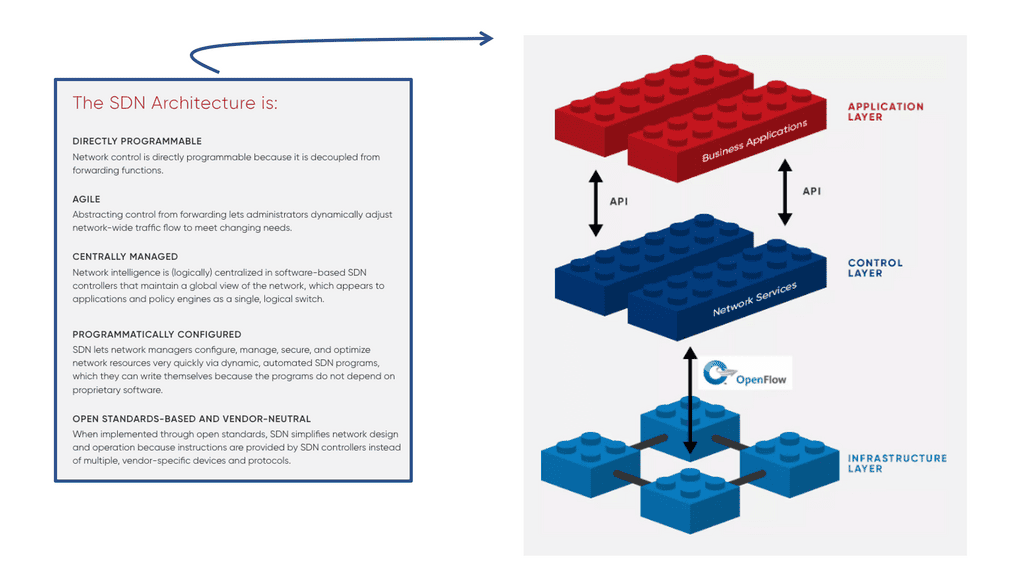
Virtual private network (VPN) and GRE
Another critical technology is virtual private networks (VPNs), which provide secure and encrypted connections over public networks. VPNs play a crucial role in network stretch by enabling organizations to connect their various locations and remote workers securely. By utilizing VPNs, businesses can ensure that their data remains protected while allowing employees to access company resources anywhere in the world.
Related: For pre-information, you may find the following useful:
Network Stretch
Understanding Stretch LAN
Stretch LAN, also known as Extended LAN or Stretched LAN, is an innovative networking approach that enables seamless connectivity across multiple geographical locations. Unlike traditional LANs, which are typically confined to a specific physical area, Stretch LAN extends the network coverage to distant places, creating a unified and expanded network infrastructure. This breakthrough technology has revolutionized how organizations establish and manage their networks, providing unprecedented flexibility and scalability.
**Benefits of Stretch LAN**
Enhanced Connectivity: Stretch LAN eliminates distance limitations, enabling seamless communication and data sharing across multiple locations. It promotes collaboration, improves productivity, and fosters a cohesive work environment even when teams are geographically dispersed.
Cost-Effective: By leveraging existing network infrastructure and extending it to new locations, Stretch LAN eliminates the need for costly hardware investments. This cost-effectiveness makes it attractive for businesses looking to expand their operations without breaking the bank.
Scalability and Flexibility: Stretch LAN offers unparalleled scalability, allowing organizations to add or remove locations as needed quickly. It provides the flexibility to accommodate evolving business needs, ensuring the network can grow alongside the organization.
**Implementing Stretch LAN**
Network Architecture: Implementing Stretch LAN requires careful planning and a well-designed network architecture. It involves deploying specialized equipment, such as stretch switches and routers, which facilitate the seamless extension of the LAN.
Configuration and Security: Proper configuration and security measures are essential to ensure the integrity and confidentiality of data transmitted across the Stretch LAN. Encryption protocols, firewalls, and robust access controls must be implemented to safeguard against potential threats.
**Applications of Stretch LAN**
Multi-Site Organizations: Stretch LAN is particularly advantageous for businesses with multiple locations, such as retail chains, educational institutions, or healthcare facilities. It provides a unified network infrastructure, enabling seamless site communication and resource sharing.
Disaster Recovery: Stretch LAN plays a crucial role in disaster recovery scenarios, where maintaining network connectivity is vital. By extending the LAN to a remote backup site, organizations can ensure uninterrupted access to critical data and applications, even in a disaster at the primary location.
Guide: Router on a stick configuration
A router on a Stick is a networking setup where a single physical interface on a router is used to communicate with multiple VLANs (Virtual Local Area Networks). A trunk port is utilized instead of dedicating a separate port for each VLAN. This trunk port carries traffic from multiple VLANs to the router, which is processed and forwarded accordingly. Network administrators can effectively manage and control traffic flow within their network infrastructure by leveraging this configuration.
Note:
VLAN 10 and VLAN 20 are configured on the switch, and a single cable connects the router and switch. Routers need access to both VLANs, so switches and routers will share the same trunk!
Subinterfaces can be created on a router. We can configure IP addresses on each sub-interface of these virtual interfaces.
Here are the IP addresses I assigned to my two sub-interfaces. The default gateway for computers in VLAN 10 will be 192.168.10.254, while the default gateway for computers in VLAN 20 will be 192.168.20.254.
Encapsulation dot1Q is an important command. Our router cannot tell which VLAN belongs to which sub-interface, so we must use this command.Fa0/0.10 will belong to VLAN 10, and Fa0/0.20 will belong to VLAN 20.
To grasp the concept of the router on a stick, we must first delve into its fundamental principles. Essentially, a router on a stick involves using a single physical interface on a router to handle traffic between multiple VLANs. By utilizing subinterfaces and 802.1Q tagging, network administrators can achieve efficient inter-VLAN routing without requiring dedicated router interfaces for each VLAN.
Benefits and Use Cases
A router on a stick offers several advantages, making it an attractive option for various scenarios. First, it saves costs by reducing the number of physical router interfaces required. Second, it simplifies network management by centralizing routing configurations. This technique is beneficial in environments where VLANs are prevalent, such as educational institutions, large enterprises, or multi-tenant buildings.
**Deploying Stretched VLANs/LAN Extensions**
Migration of virtual machines to another data center is critical for virtual workload mobility. Conversely, virtual machines and their applications can still communicate and be identified on the network, and services can continue to run.
Stretched VLANs, which span multiple physical data centers, are typically required for this to work. A Layer 3 WAN SDN connects locations in multisite data center topologies. This is the most straightforward configuration, removing many complex considerations from the environment.
A native Layer 3 environment requires migrated devices to change their IP addresses to match the addressing scheme at the other site, or all resources on the VLAN subnet must be moved at once. This approach severely restricts the ability to move resources from one site to another and does not provide flexibility.
Therefore, it is necessary to implement stretched VLANs to facilitate live migration over distance since they can extend beyond a single site and enable resources to communicate as if they were local.
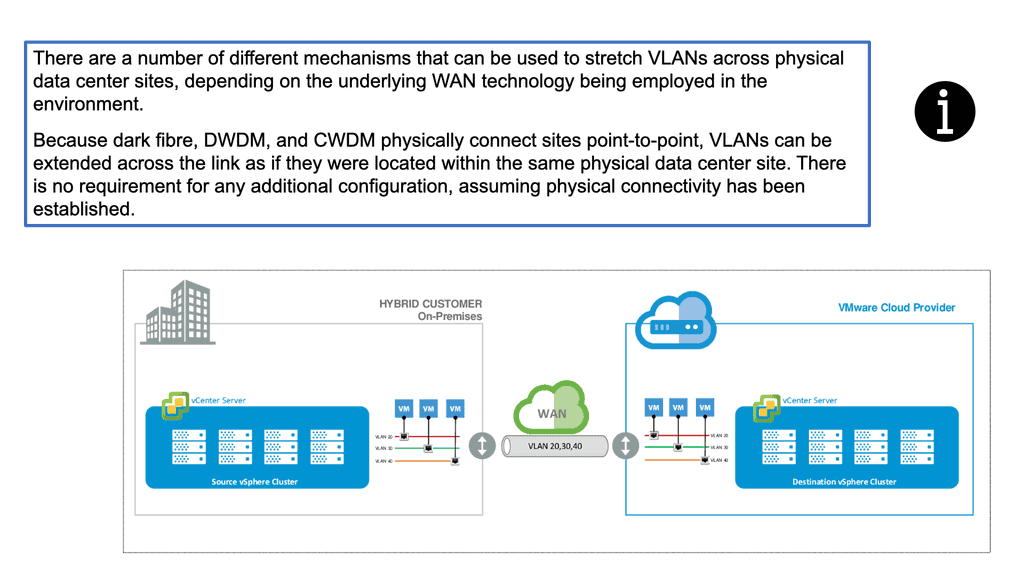
Overlay Networking
Overlay networking is a virtual network infrastructure that operates on top of an existing physical network. It allows for creating logical networks decoupled from the underlying hardware infrastructure. Organizations can achieve greater flexibility, scalability, and security by encapsulating data packets within a separate overlay network.
Benefits of Overlay Networking
Overlay networking offers a multitude of benefits for businesses. Firstly, it simplifies network management by enabling seamless integration of different network types, such as virtual private networks (VPNs) and software-defined networks (SDNs).
Secondly, overlay networks empower organizations to scale their infrastructure effortlessly, as new devices and services can be added without disrupting the existing network.
Lastly, overlay networking enhances security by isolating and encrypting traffic within the overlay, protecting sensitive data from unauthorized access.
Implementation of Overlay Networking
Implementing overlay networking requires a robust and flexible software-defined network controller. This controller manages the creation, configuration, and maintenance of overlay networks. The underlying physical network must also support the necessary protocols, such as Virtual Extensible LAN (VXLAN) or Generic Routing Encapsulation (GRE). Organizations can leverage these technologies to establish overlay networks across data centers, cloud environments, and geographically dispersed locations.
Network modularity. Different designs and approaches.
Layered hub-and-spoke topologies are more widely used because they provide better network convergence than ring topologies. What about building a full mesh of modules?
Although a full mesh design might work well for a network with a small set of modules, it does not have stellar scaling characteristics because it requires an additional (and increasingly more extensive) set of ports and links for each module added to the network.
Additionally, full mesh designs don’t lend themselves to efficient policy implementation; each link between every pair of modules must have policy configured and managed, a job that can become demanding as the network expands.

The Value of Network Modularity
Modular network design is an approach to architecture that divides the entire network into small, independent units or modules. These modules can be connected to form a more extensive network, enabling organizations to create a custom network tailored to their specific needs. Organizations can customize their network using modular network design to meet performance and scalability requirements while providing a cost-effective solution.
The value of a stretch network is that it’s modular and can affect only certain network parts. Therefore, you can design around its concept. A modular network separates the network into various functional modules consisting of network functions, each targeting a specific place or purpose in the network.
This brings a lot of value from a security and performance perspective. In a leaf and spine data center design, you could consider a network module, a pod, or a group of pods. So, the stretched network concepts must first be addressed with a bird’s eye view in the network design.
Network Stretch and Route Path Selection
Network stretch is the difference between the best possible path and the actual path the traffic takes through the network. The concept of a stretched network relates to both Layers 2 and 3.
For instance, if the shortest actual path available is 2 hops, but the traffic follows a 3-hop path, the stretch is 1. An increase in network stretch always represents sub-optimal use of available resources. To fully understand the concept of network stretch, first, consider the basics of route path selection and route aggregation.
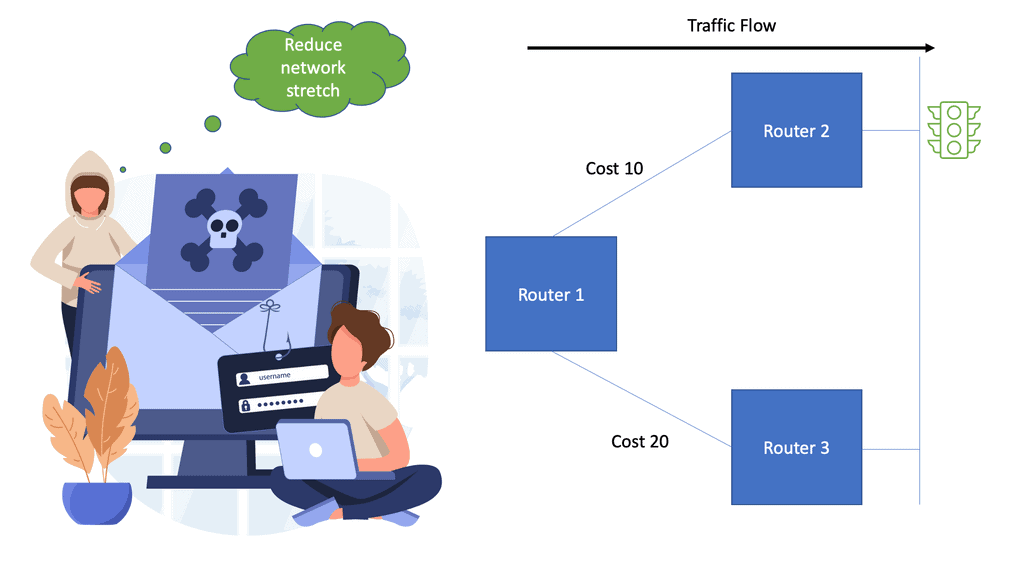
The following diagram illustrates the basics of routing. We have three routers in the network topology. Router 1 has two outbound connections—one to Router 2 and another to Router 3, each with different routing metrics. Routers 1 to Router 2 cost 10, and Router 1 to Router 3 cost 20. Destination-based routing for the same prefix length always prefers a path with a lower cost, resulting in traffic following the path to Router 2.
Route path selection
One critical aspect of a router’s functionality is its ability to determine the most efficient route for these packets. This process, known as route path selection, ensures data is transmitted optimally and reliably.
**Factors Influencing Route Path Selection**
1. Network Topology:
The underlying network topology significantly impacts the route path selection process. Routers have a routing table containing information about the available paths to different destinations. Based on this information, a router determines the best path to forward packets. Factors such as the number of hops, link capacity, and network congestion are considered to ensure efficient data transmission.
2. Administrative Distance:
Administrative distance is a metric routers use to determine the reliability of a particular routing protocol or source. Each forwarding routing protocol is assigned a numerical value indicating its preference level. With multiple routing protocols or sources, the router selects the one with the lowest administrative distance. For example, a router might prefer a directly connected network over a network learned through a dynamic routing protocol.
3. Routing Metrics:
Routing metrics are used to quantify the performance characteristics of a route. Different routing protocols utilize various metrics to determine the best path. Standard metrics include hop count, bandwidth, delay, reliability, and load. By analyzing these metrics, routers can select the most suitable path based on the network requirements and priorities. Take note of the metric assigned to the individual routes once the summary routes have been configured on R1. A metric of 16 is assigned, meaning they are not used while the summary route is in place.
Routing Algorithms:
1. Shortest Path First (SPF) Algorithm:
The SPF algorithm, Dijkstra’s algorithm, is widely used for route path selection. It calculates the shortest path between the source and destination based on the link costs. The algorithm maintains a routing table that stores the shortest path to each destination. By iteratively updating the routing table, routers can dynamically adapt to changes in the network topology.
2. Border Gateway Protocol (BGP):
BGP is a routing protocol used in large-scale networks like the Internet. Unlike interior routing protocols, BGP focuses on inter-domain routing. BGP routers exchange routing information to determine the best path for data transmission. BGP considers path length, AS (Autonomous System) path, and routing policies to select routes.
Example BGP Technology: BGP Add Path
### Understanding the Mechanics
BGP Add-Path is an extension to the BGP protocol defined in RFC 7911, which allows routers to advertise multiple paths for a single prefix without the need for additional configuration or complexity in the network. The fundamental change introduced by Add-Path is its ability to send multiple “best” paths, rather than restricting the advertisement to just one. This extension is particularly useful in scenarios involving load balancing, improved redundancy, and enhanced convergence. By advertising multiple paths, network operators can ensure better utilization of available bandwidth and increased resilience against path failures.
### Benefits of Implementing Add-Path
The primary advantage of BGP Add-Path is its ability to enhance network stability and efficiency. With multiple paths available, routers can make more informed decisions about packet forwarding, leading to improved load distribution and reduced convergence times during network changes. This is especially beneficial in large-scale networks, where the complexity and volume of traffic require more sophisticated routing strategies. Moreover, Add-Path contributes to more reliable connectivity by providing backup paths that can be quickly leveraged in case of failure, thus minimizing downtime and service disruption.
Route aggregation
Next, we have route aggregation. Route summarization—also known as route aggregation—is a method to minimize the number of routing tables in an IP network. It consolidates selected multiple routes into a single route advertisement, which serves two purposes in the network.
- Breaking the network into multiple failure domains and
- Reducing the amount of information the routing protocol must deal with when converging.
In our case, Router 1 must install all individual routes without route aggregation, including metrics, tags, and other information. The best path to reach a particular destination must be calculated every time the topology changes.
Route aggregation is crucial in simplifying the routing process and optimizing network performance in networking. By consolidating multiple network routes into a single entry, route aggregation reduces the size of routing tables, improves scalability, and enhances overall network efficiency. In this blog post, we will explore the concept of route aggregation, its benefits, and its implementation in modern networking environments.
Guide: EIGRP Summary Address
In the following lab guide, we have a DMVPN network. R11 is the hub, and R31 and R41 are the spokes. We are running EIGRP over the DMVPN tunnel, which is a mGRE tunnel. EIGRP has been configured to send a summary route to the spoke sites.
Notice below in the screenshot that after the configuration, we have a Null0 route on the hub where the summarization was configured, and also, the spokes now only have one route, i.e., the summary route, in their routing tables.
Remember that when you have a Hub and Spoke topology and a Distant Vector protocol, we have issues with Split Horizon at the hub site. However, as we are sending a summary route from the Hub, this is not an issue.
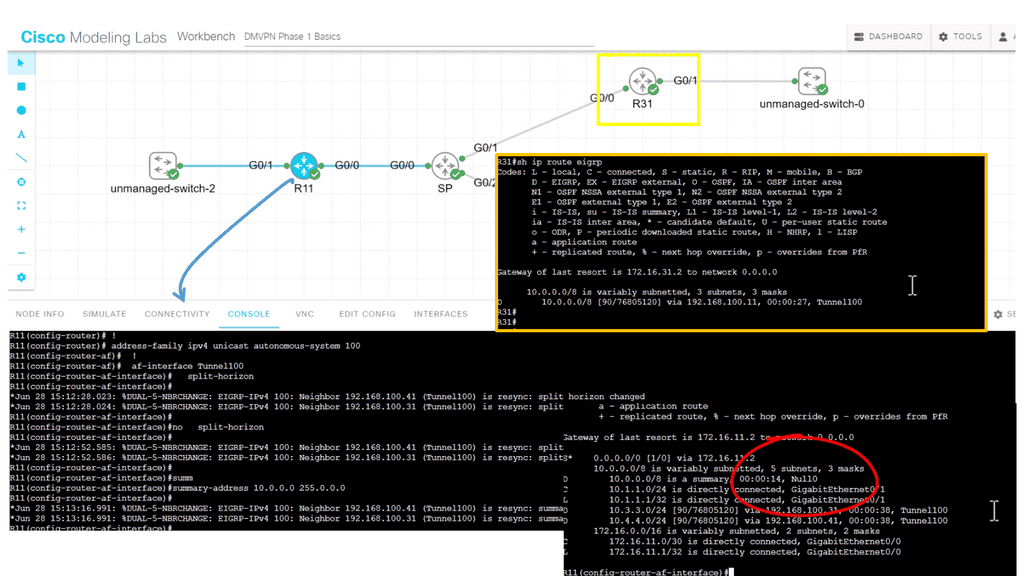
What is Route Aggregation?
Route aggregation, also known as route summarization or supernetting, is a technique for consolidating multiple network routes into a more concise representation. Instead of advertising individual routes, network administrators can advertise a summarized route, which encompasses several smaller routes. This consolidation allows routers to make more efficient routing decisions, reducing the complexity of routing tables.
**Benefits of Route Aggregation**
1. Reduced Routing Table Size: One of route aggregation’s primary advantages is the significant reduction in routing table size. By summarizing multiple routes into a single entry, the number of entries in the routing table is significantly reduced, leading to faster routing lookups and improved scalability.
2. Enhanced Network Efficiency: Smaller routing tables allow routers to process routing updates more quickly, improving network efficiency. The reduced size of routing tables also reduces memory and processing requirements, enabling routers to handle higher traffic loads without performance degradation.
3. Improved Convergence: Route aggregation helps to improve network convergence, which refers to the time it takes for routers to reach a consistent view of the network topology after a change occurs. Consolidating routes expedites the convergence process, as routers have fewer individual routes to process and update.
4. Enhanced Security: Using route aggregation, network administrators can help protect network resources by concealing internal network details. By advertising summarized routes instead of specific routes, potential attackers find it more challenging to gain insight into the network’s internal structure.
**Implementation of Route Aggregation**
Route aggregation can be implemented using various routing protocols, such as Border Gateway Protocol (BGP) and Open Shortest Path First (OSPF). These protocols allow network administrators to configure route summarization at specific points within the network, optimizing routing efficiency.
When implementing route aggregation, balancing summarizing routes too aggressively and maintaining the necessary network granularity level is essential. Over-aggregation can lead to suboptimal routing decisions and potential connectivity issues. Network administrators must carefully design and configure route aggregation to ensure optimal performance.
Route Aggregation: A networking technique
Route aggregation is a networking technique that reduces the number of routes in a routing table. It is based on summarizing multiple IP addresses into a single IP address prefix. The method reduces the size of routing tables, thereby reducing the memory and bandwidth required for network communication.
Route aggregation, also known as route summarization or supernetting, groups multiple IP addresses into a single IP address prefix by selecting a typical bit pattern between the IP addresses and replacing that bit pattern with a single value. This reduces the number of routes, reducing the router’s total memory and bandwidth requirements.
Route aggregation can be used in both interior and exterior routing protocols. In internal protocols, the router can use route aggregation to reduce the number of routes in the routing table, thus reducing the total memory and bandwidth requirements.
In exterior protocols, route aggregation can reduce the number of routes sent to other network routers. This reduces the overall network traffic and the time it takes for the routing information to be propagated throughout the network.
Route aggregation and performance problems
This can cause performance problems, especially if the network has a high state change rate and many routes. Whenever the network topology changes, the router’s control plane must go through the convergence process steps ( detect, describe, switch, find ) and recalculate the best path to the affected destinations. If the rate of change is faster than the control plane can calculate new best paths, the network will never converge. One method used to overcome this is Route Aggregation.
Route aggregation creates separate failure domains and boundaries in the network. Routing nodes on different sides of the boundary will not query each other. It is essentially slicing the network. In addition, if a specific link frequently alternates between Up and Down states, the links uninvolved in the route summarization will not be affected. This prevents route flapping and improves network stability.
Route aggregation example:
So, in summary, route aggregation lets you take several specific routes and combine them into one inclusive route. As a result, route aggregation can reduce the number of routes a given protocol advertises. This is because the aggregates are activated by contributing routes. The routing protocols will have different route aggregation methods, such as those used in OSPF. When an ABR sends routing information to other areas, it originates Type 3 LSAs for each network segment.
If any contiguous segments exist in this area, run the abr-summary command to summarize these segments into one. An ABR then sends just one summarized LSA to other areas, and no LSAs belong to the summarized network segment specified by this command. Therefore, the routing table size is reduced, and router performance is improved. The critical point in the diagram below is the two separate failure domains. Failure domains A and B.
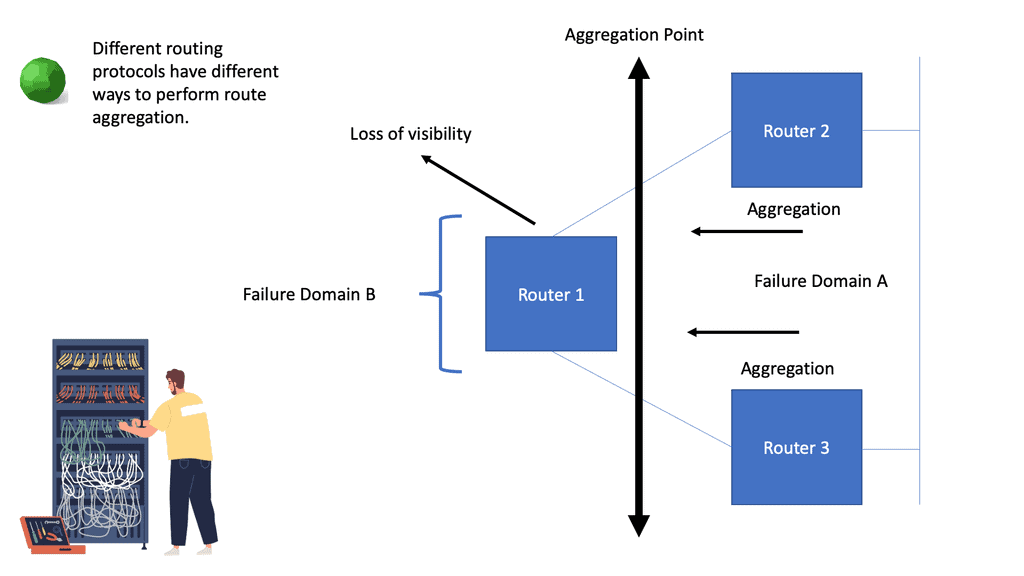
State versus stretch
This has benefits and drawbacks in that packets can follow a less optimal path to reach their destination. When you summarize at the edge of the network, the receiving router loses complete network visibility, which can cause an increase in network stretch in some cases. What happens to traffic entering Router 1 and traveling to destination 192.168.1.1/24?
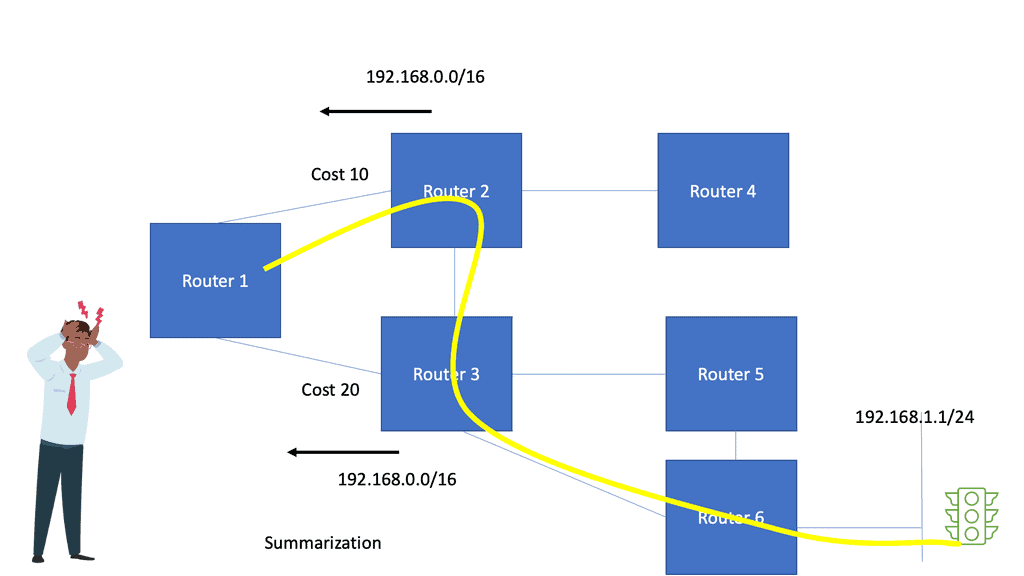
Loss of visibility and state results in suboptimal traffic flow
Without aggregation on Router 3, this traffic would flow to Router 1 – Router 3 – Router 6. However, with route aggregation configured on both Router 2 and Router 3, this traffic will take the path with the better cost, Router 1 – Router 2 – Router 3 – Router 6, increasing one hop. As a result, the path from Router 1 to reach the destination 192.168.1.1/24 has stretched by one hop – or the stretch of the network has increased by 1.
Understanding Suboptimal Traffic Flow:
Suboptimal traffic flow is when data packets transmitted through routers take longer than necessary to reach their destination. This issue arises due to the complex nature of router operations, congestion, and routing protocols. Simply put, the path the data packets take is inefficient, resulting in delays, packet loss, and even degraded network performance.
- Causes of Suboptimal Traffic Flow:
Several factors contribute to routers’ suboptimal traffic flow. One significant factor is the inefficient routing algorithms employed by routers. These algorithms determine the best path for data packets to travel through a network. However, due to limitations in these algorithms, they may choose suboptimal paths, such as congested or longer routes, resulting in delays.
Another cause of suboptimal traffic flow is network congestion. Conger occurs when multiple devices are connected to a router, and the data traffic exceeds capacity. This congestion leads to packet loss, increased latency, and inefficient traffic flow.
- Impact on Online Experiences:
The suboptimal traffic flow in routers can significantly impact our online experiences. Slow-loading web pages, buffering videos, and laggy online gaming sessions are just a few examples. Beyond these inconveniences, businesses relying on efficient data transfer may suffer from decreased productivity and customer dissatisfaction. It is, therefore, crucial to address this issue to ensure a seamless online experience for all users.
- Solutions to Improve Traffic Flow:
Several approaches can improve routers’ suboptimal traffic flow. One solution is investing in routers with advanced algorithms that optimize the path selection process. These algorithms can consider network congestion, latency, and packet loss to choose the most efficient route for data packets.
Additionally, implementing Quality of Service (QoS) techniques can help prioritize critical traffic, ensuring that it receives higher bandwidth and lower latency. By giving priority to time-sensitive applications such as video streaming or VoIP calls, QoS can significantly improve the overall traffic flow.
Regular router maintenance and firmware updates are also crucial to maintaining optimal traffic flow. By keeping the router’s software current, manufacturers can address any known issues and improve the device’s overall performance and efficiency.
- Network Performance and CDN
Moreover, network performance can be impacted when the network is stretched over long distances. Latency and bandwidth limitations can affect the user experience, particularly for applications that require real-time data transmission. To overcome these challenges, businesses must carefully design their network architecture, leveraging technologies like content delivery networks (CDNs) and edge computing.
- State reduction ( blocking links ) costs increase the stretch.
Consider the example of a Spanning Tree regarding state/stretch trade-offs. A spanning tree works by selecting one switch as the tree’s root and selecting specific links within the tree structure to move toward the root. This reduces the state to an absolute minimum by forcing all traffic along a single tree and blocking redundant links that don’t belong to that Tree. However, the state reduction ( blocking links ) costs increase the stretch through the network to the maximum possible.
This has led to the introduction of THRILL and Cisco’s FabricPath. These technologies allow you to have active/active paths, thereby increasing the state of the network while decreasing the stretch. When examining the data center transition, the default way to create scalable designs for Layers 2 and 3 is to have an overlay, such as VXLAN. Layer 2 and 3 traffic is differentiated with the VNI of the VXLAN header. All of these operate over a routed Layer 3 underlay.
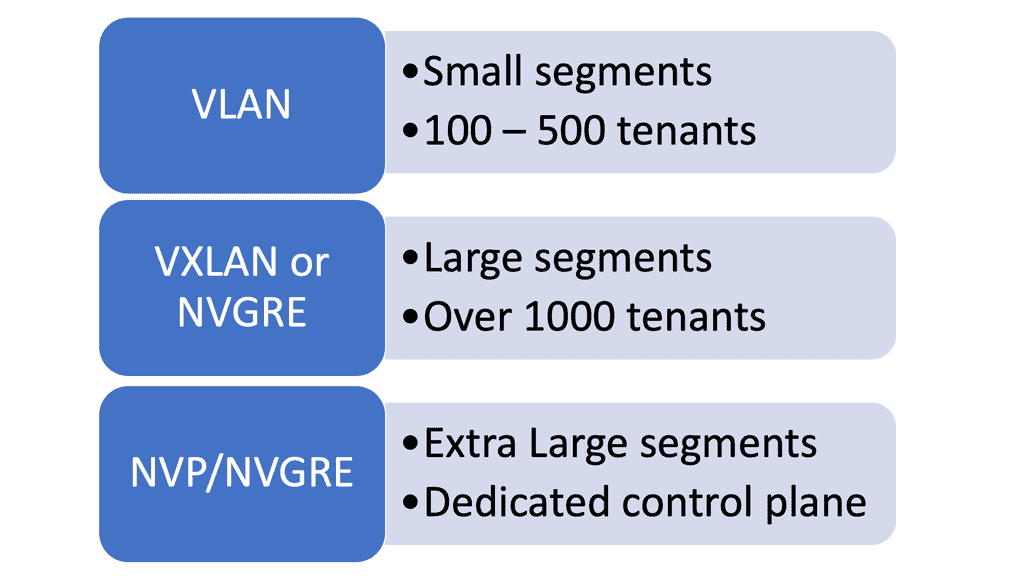
A closing point on the stretch network
You can’t hide state information constantly, as it decreases the network’s overall efficiency by increasing the stretch. However, if all your traffic flows north/south, reducing the state will not impact the stretch, as the traffic can only follow one direction. But if you have a combination of traffic patterns ( north/south & east/west ), reducing the state will cause traffic to take a sub-optimal path through the network – thus increasing the stretch.
Summary: Network Stretch
In this fast-paced digital age, the concept of network stretch has emerged as a game-changer. Network stretch refers to expanding and optimizing networks to meet the increasing demands of connectivity. This blog post explored the various aspects of network stretch and how it can revolutionize how we connect and communicate.
Understanding Network Stretch
Network stretch is more than expanding physical infrastructure. It involves leveraging advanced technologies, such as software-defined networking (SDN) and network function virtualization (NFV), to enhance network capabilities. By embracing network stretch, organizations can achieve scalability, flexibility, and improved performance.
The Benefits of Network Stretch
Network stretch offers a myriad of benefits. Firstly, it enables seamless connectivity across various locations, allowing businesses to expand their reach without compromising network performance. Secondly, it enhances disaster recovery capabilities by creating redundant pathways and ensuring business continuity. Lastly, network stretch empowers organizations to adopt cloud-based services and leverage the Internet of Things (IoT) power.
Implementing Network Stretch Strategies
Implementing network stretch requires careful planning and execution. Organizations need to assess their current network infrastructure, identify areas for improvement, and leverage technologies like SDN and NFV. Working with experienced network providers can also help design and deploy robust network stretch solutions tailored to specific business needs.
Overcoming Challenges
While network stretch offers immense potential, it comes with its challenges. Ensuring security across stretched networks becomes paramount, as it involves a broader attack surface. Proper encryption, authentication protocols, and network segmentation are crucial to mitigate risks. Additionally, organizations must address potential latency issues and ensure seamless integration with existing network infrastructure.
Conclusion
In conclusion, network stretch presents a remarkable opportunity for organizations to unlock new connectivity, scalability, and performance levels. By embracing advanced technologies and implementing sound strategies, businesses can revolutionize their networks and stay ahead in the digital era. Whether expanding geographical reach, improving disaster recovery capabilities, or embracing emerging technologies, network stretch is the key to a more connected future.

